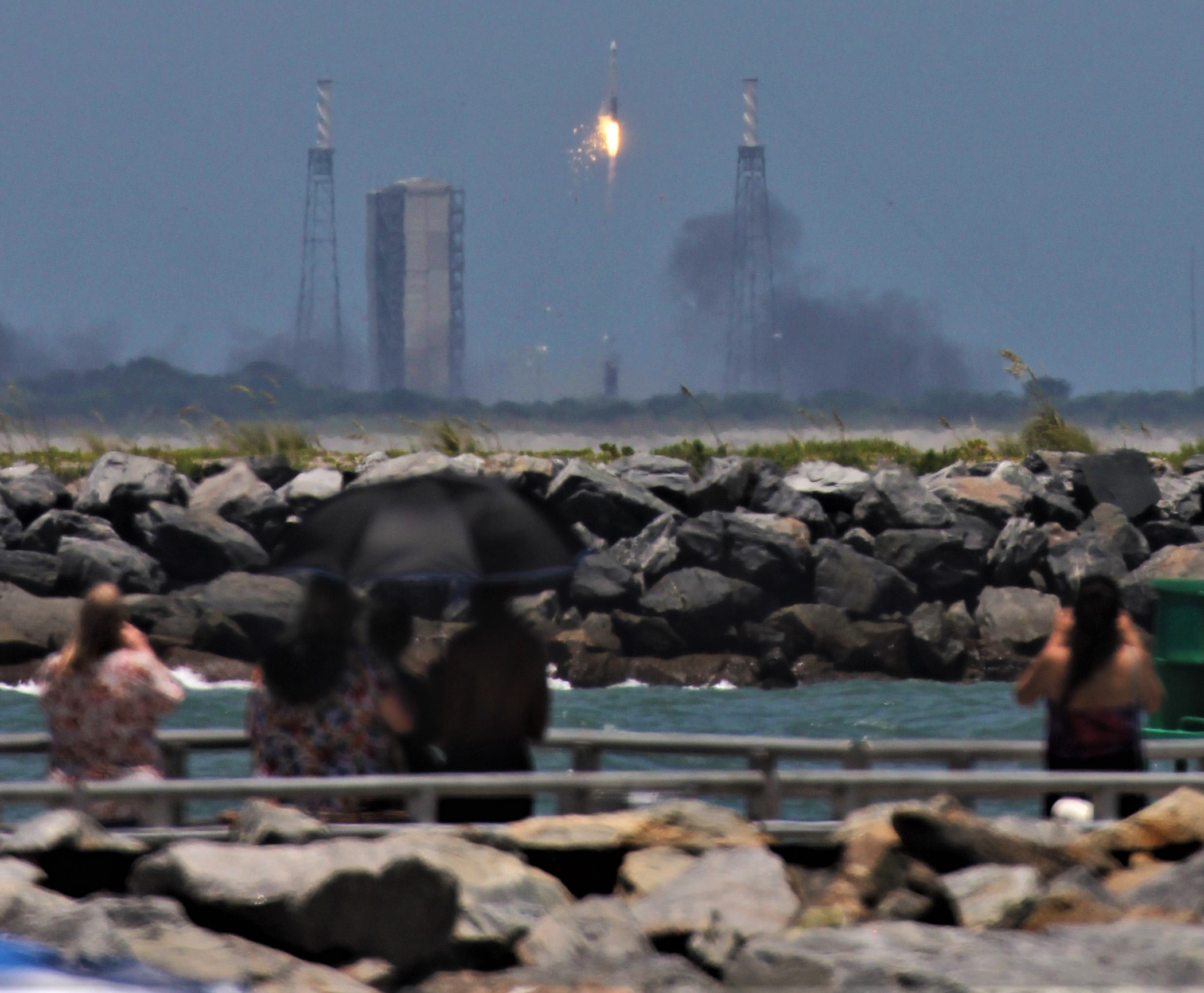
For SpaceUpClose.com & RocketSTEM
JETTY PARK BEACH, FL – An Astra launch failure resulted in the loss and destruction of the first pair of NASA TROPICS hurricane research cubesat satellites Sunday afternoon, June 12, after the premature shutdown of the upper stage about seven minutes after liftoff from Cape Canaveral.
After delays due to a wayward boat and to confirm the status of conditioning of the rockets liquid oxygen propellant the ‘GO’ to launch was finally given towards the end of the two hour launch window which ran from 12 Noon to 2 p.m. EDT.
The flight of the tiny 43 foot tall (13.1 m) tall Astra launch vehicle from Cape Canaveral finally took place with ignition of the first stage engines at 1:43 p.m. EST (1743 GMT) June 12 and liftoff from Space Launch Complex 46 (SLC-46) at Cape Canaveral Space Force Station, Florida carrying the NASA Tropics 1 mission comprised two science cubesats.
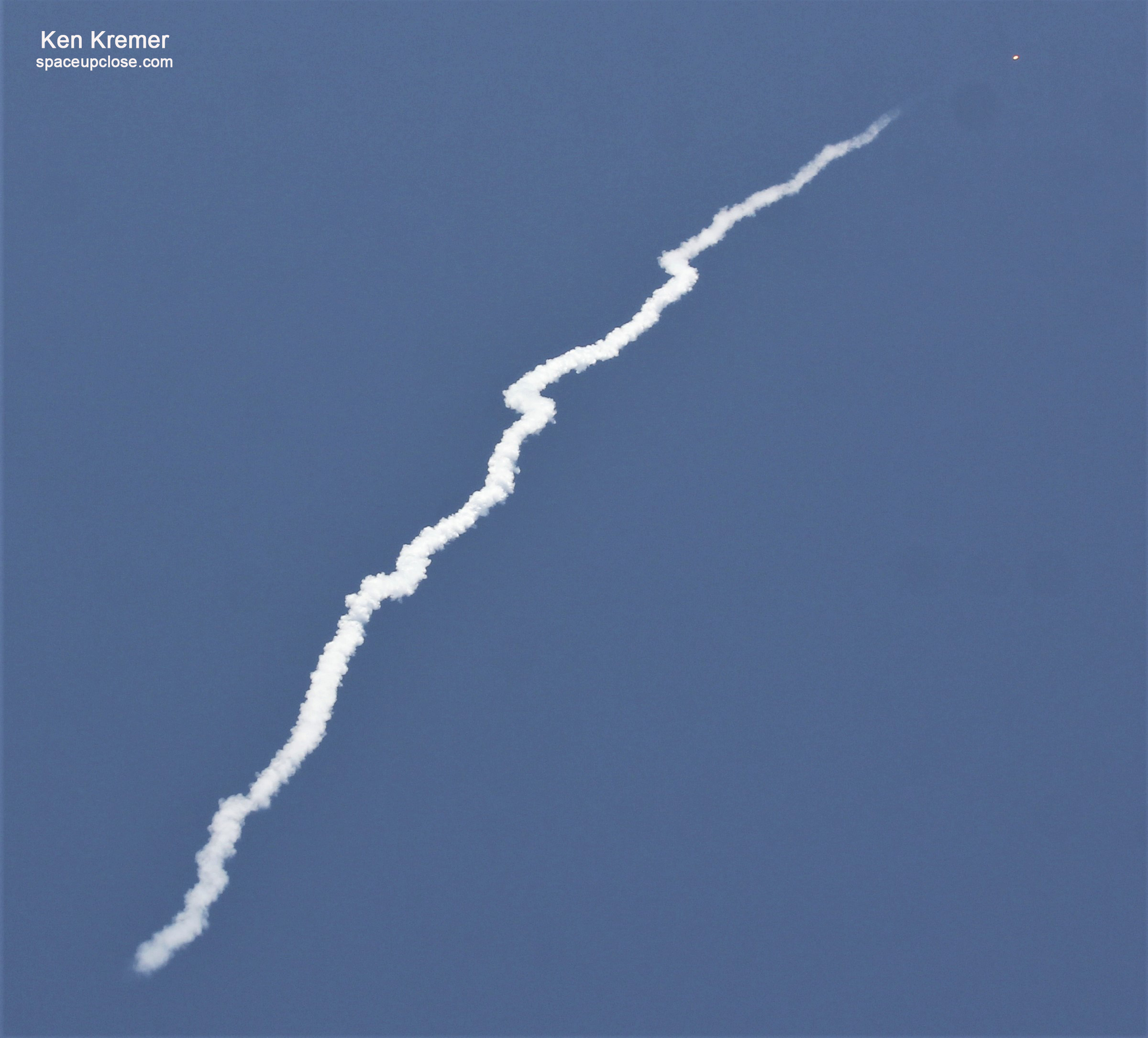
This was to be the first of three CubeSat launches for NASA’s Time-Resolved Observations of Precipitation structure and storm Intensity with a Constellation of Smallsats (TROPICS) mission.
The goal was to create a 6-satellite constellation of 3 unit cubesats.
4 cubesats are required to operate the TROPICS hurricane research monitoring investigation system
This was also the second launch failure in two successive attempts by Astra to launch cubesats for NASA to low Earth orbit using their Rocket 3.3 launch vehicle designated LV0010 – following the initial failure with different research satellites in Feb. 2022 when the upper stage failed to separate properly from the first stage. See our earlier story and photos.
Enjoy our photos of the Astra launch taken off site at Jetty Park beach by Ken Kremer for Space UpClose.
NASA and Astra once again did not allow any closer viewing of the rocket or launch or remote camera setup – in a rare and unfortunate instance
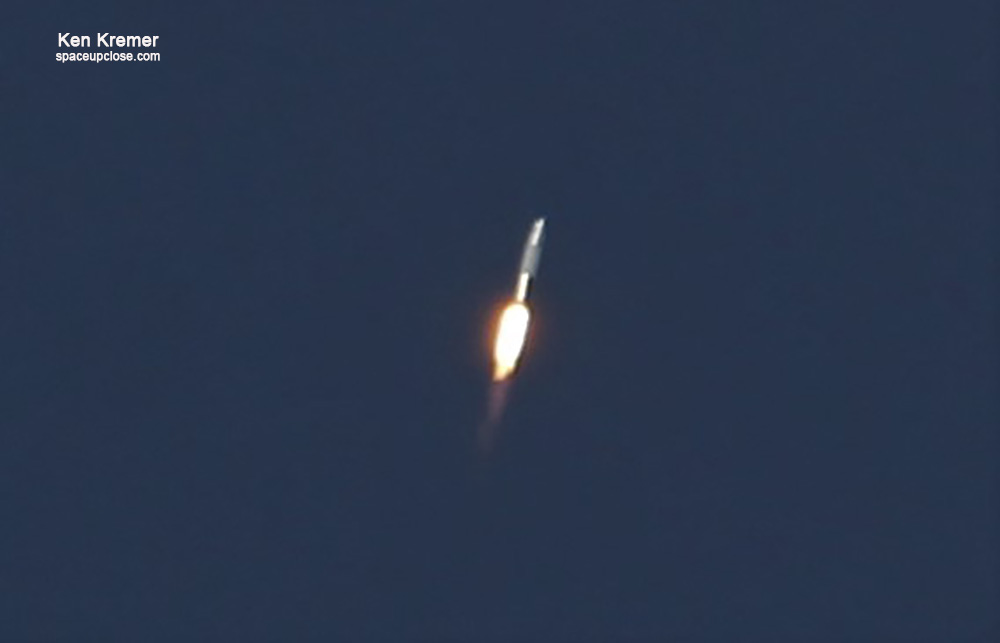
Everything appeared to go well with the Astra rockets first stage, with stage separation followed by ignition of the upper stage – which was supposed to fire for 5 minutes and 15 seconds.
Instead the burn stopped inexplicably after about 4 minutes, roughly one minute early.
Then the rocket briefly appeared to start tumbling before the video feed from Astra and NASA Spaceflight cut off.
We had a nominal first stage flight. The upper stage shut down early and we did not deliver the payloads to orbit. We have shared our regrets with @NASA and the payload team. More information will be provided after we complete a full data review.
— Astra (@Astra) June 12, 2022
At that point the stage was not flying fast enough to achieve orbit and the NASA cubesats were doomed, unable to fly higher and then fell and either burned up or crashed.
The tiny 3 unit cubesats are about the size of a shoe box or a loaf of bread – roughly a foot long.
They are designed to monitor the formation and evolution of tropical cyclones and would measure the temperature, pressure and humidity in near real time every 50 minutes – via a miniaturized microwave radiometer.
This data will help scientists understand what drives a storm sometimes rapid intensification and develop better weather forecasting models.
Other satellites only provide data at best every few hours.
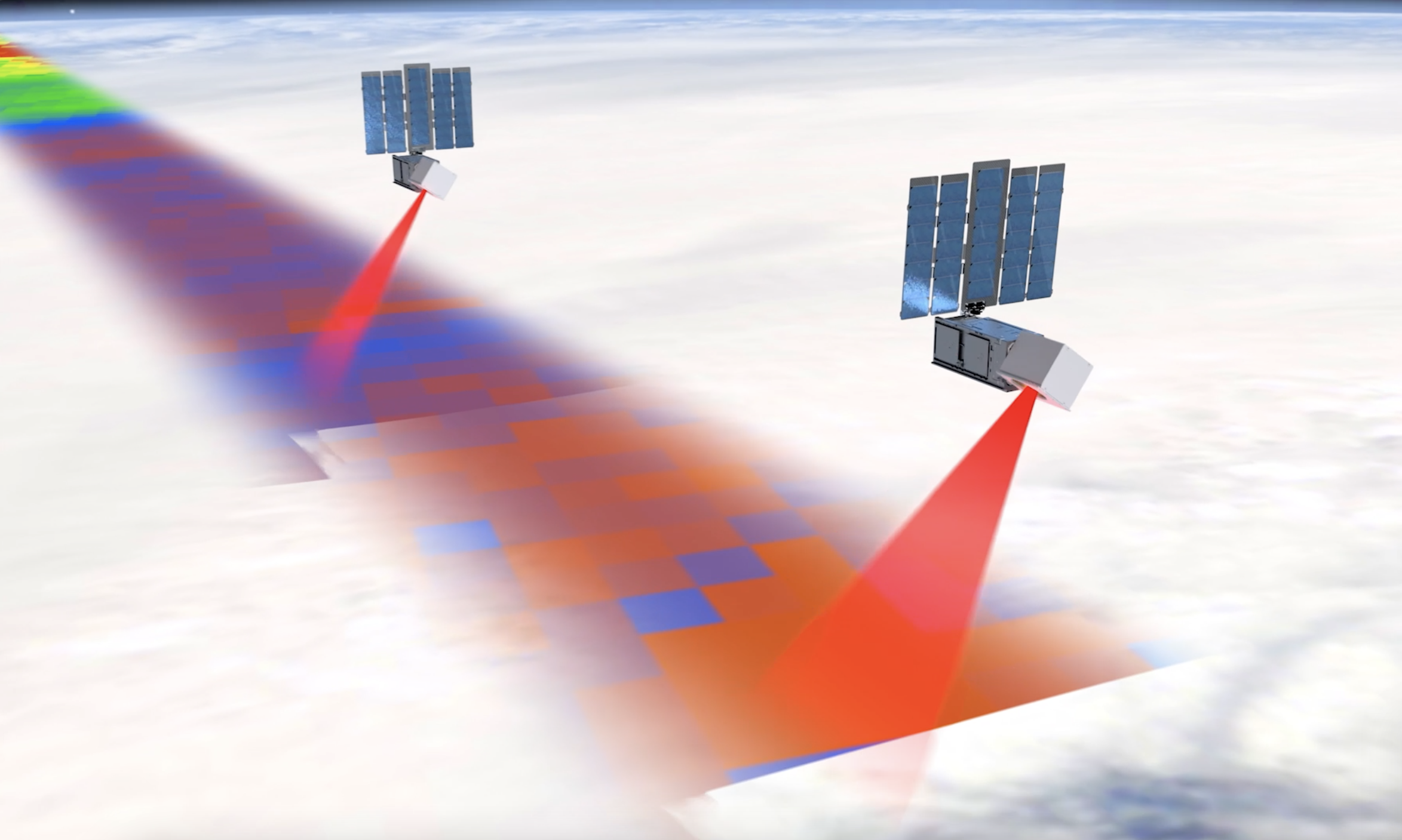
They were to be launched to an altitude of 550 km at 29.75 degrees inclination to the equator – which could not be accommodated by the typical rideshare mi8ssion launch profile
“We need to go to a 30-degree inclined orbit and no one else really wants to go there. The rideshares are all going to sun-synchronous orbits or mid-inclinations, so it’s very well targeted to a smaller vehicle with a very targeted insertion where they can get us exactly where we want to go,” said William Blackwell, principal investigator for TROPICS at MIT Lincoln Laboratory, in a prelaunch video about the mission.
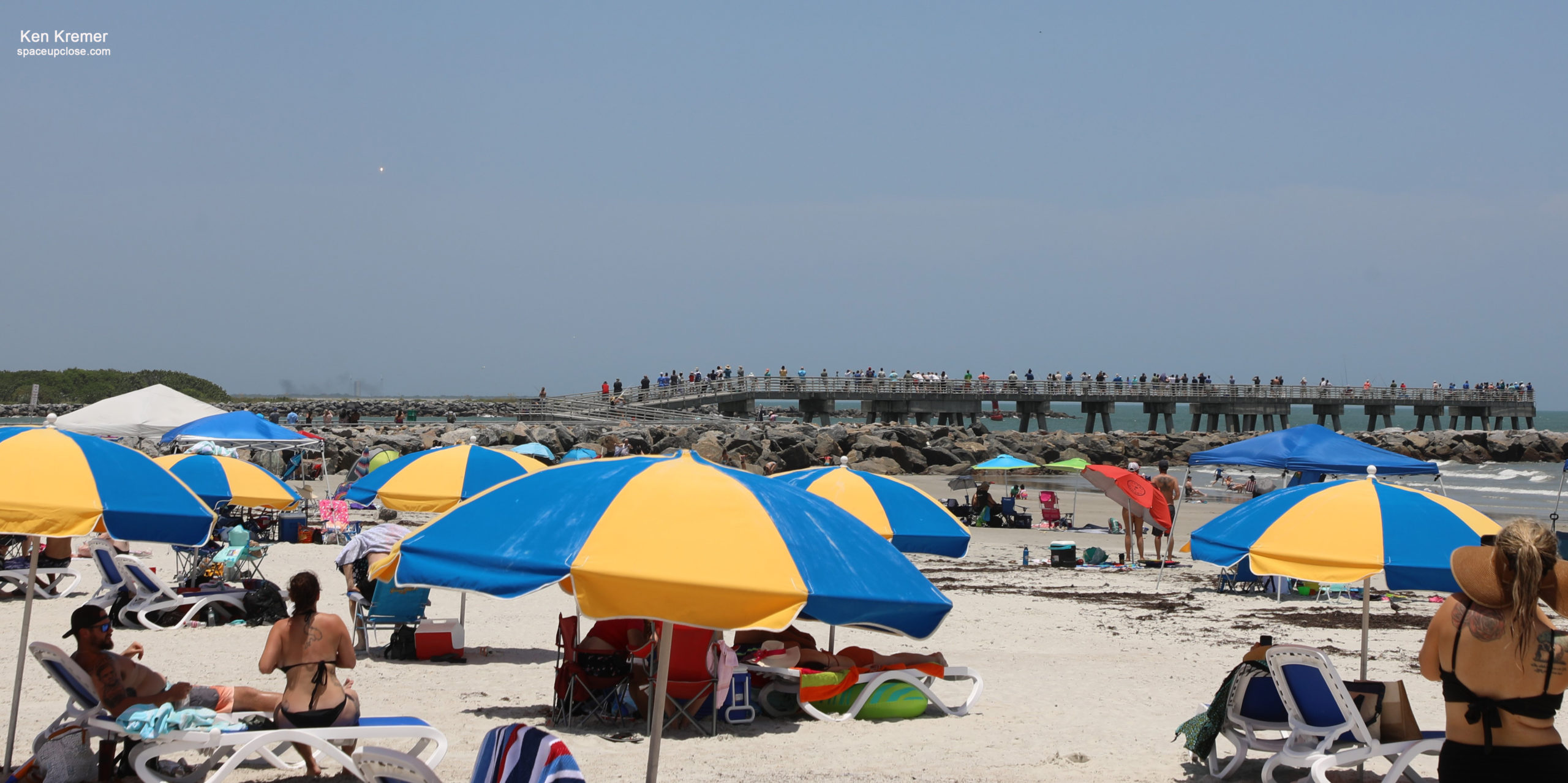
Astra is a relativity new company founded as a small satellite launch provider.
They are under contract with NASA to help promote competition and drive down launch costs
“NASA needs to do this,” said Dr. Ken Kremer with Space UpClose in an interview with WFTV ABC News Orlando. “They can’t just be dependent on SpaceX and ULA. They need multiple launch providers.”
Astra won a contract to launch a total of six TROPICS CubeSats over three launches at a total cost of $8 million.
“While we are disappointed in the loss of the two TROPICS CubeSats, the mission is part of NASA’s Earth venture program, which provides opportunities for lower-cost, higher risk missions. Despite a loss of the first two of six satellites, the TROPICS constellation will still meet its science objectives with the four remaining CubeSats distributed in two orbits. With four satellites, TROPICS will still provide improved time-resolved observations of tropical cyclones compared to traditional observing methods,” NASA said in a statement in response to the loss.
“TROPICS is an Earth venture mission – science-driven, competitively selected, low-cost missions that provide opportunity for investment in innovative Earth science to enhance our capability to better understand the current state of the Earth system and to enable continual improvement in the prediction of future changes.”
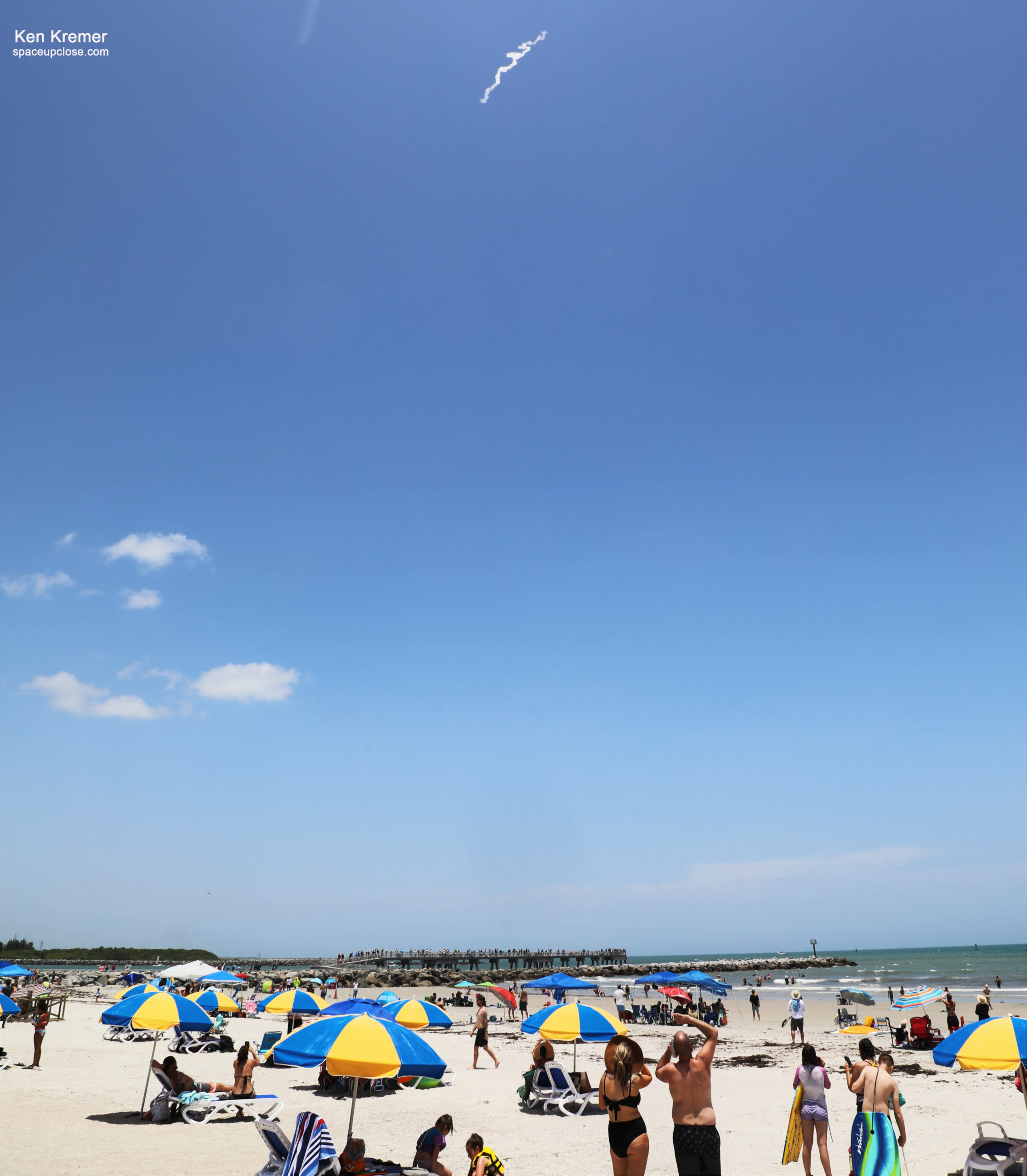
The TROPICS mission will provide rapid-refresh microwave measurements over the tropics that can be used to observe the thermodynamics of the troposphere and precipitation structure for storm systems at the mesoscale and synoptic scale over the entire storm lifecycle.
Video Caption: A large crowd of spectaWhen launched, the TROPICS satellites will work together to provide near-hourly microwave observations of a storm’s precipitation, temperature, and humidity. The mission is expected to help scientists understand the factors driving tropical cyclone intensification and to improve forecasting models. Credits: NASA
A large crowd of spectators had gathered at Jetty Park beach to witness the Astra launch.
“The NASA TROPICS mission is really important and it’s really important for Florida,” Kremer said. “We just had a tropical cyclone hit southern Florida, drench it with almost a foot of rain in the Miami area. What this satellite is all about is measuring the formation and evolution of tropical cyclones and hurricanes in real time.”

The mission was licensed by the FAA and will be investigated by a team comprising the FAA, Astra and NASA.
Meanwhile they will search for the root cause, make recommendations, rectify any issues and deficiencies, and implement and verify changes for the way forward before any further launch attempts
“As a Federal Aviation Administration (FAA) licensed mission, the FAA and Astra will lead the investigation to understand what happened during the TROPICS-1 launch. NASA will lend any expertise needed but would expect to pause the launch effort with Astra while an investigation is being conducted to ensure we move forward when ready.”
NASA remains optimistic about using Astra’s launch vehicle.
“Even though we are disappointed right now, we know: There is value in taking risks in our overall NASA Science portfolio because innovation is required for us to lead,” Thomas Zurbuchen, NASA associate administrator for science, tweeted after the launch failure.
“I am confident that in the future we will succeed in using this valuable launch capability to explore the unknown and give others the same opportunity to inspire the world through discovery.”
SpaceX had multiple launch failures in the 2000s before achieving the outstanding success they worked hard for and enjoy today.
Watch Ken’s commentary about Astra, SpaceX missions including Nilesat 301, Transporter-5, Starliner, NASA SLS WDR demo test, NASA Crew-3, Crew 4 and SpaceX AX-1 missions and Starlink and NASA TROPICS 1.
Jun 9/10: WFTV ABC Orlando features my commentary about the upcoming NASA TROPICS 1 & 2 cubesat science launch on an Astra Rocket 3.3 from pad 46 for NASA which will study the formation and evolution of Tropical Cyclones and Hurricanes. Two more launches will follow for 6 TROPICS cubesats altogether over next few months
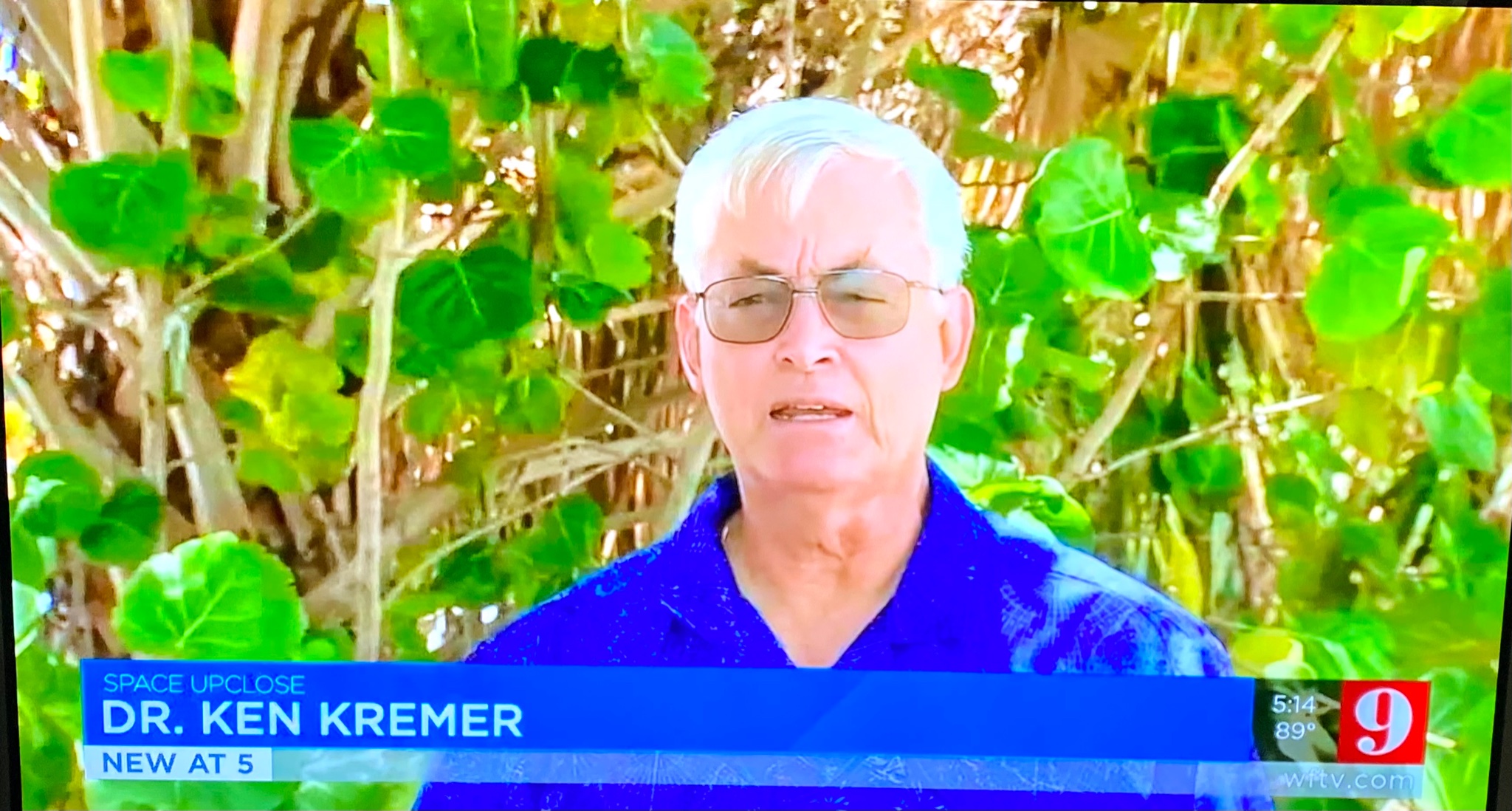
Jun 8: WFTV ABC Orlando features my commentary about the SpaceX Falcon 9 launch of NileSat301 telecom sat for Egypt
June 6/7: WFTV ABC Orlando features my commentary about completing 2nd rollout to pad 39B for 2nd round WDR tanking test, what’s involved in and why its critical to the future of Project Artemis:
May 25/26: WFTV ABC Orlando featured my commentary about the successful ISS undocking and touchdown of Starliner on OFT-2 test flight
May 19/20: WFTV ABC Orlando and Fox 35 Orlando featured my prelaunch and post launch commentary about the critical nature of the Boeing Starliner OFT-2 mission for NASA
May 11: WFTV ABC Orlando News featured my commentary & analysis about Boeing Starliner crew capsule targeting launch May 19 for long delayed OFT2 uncrewed test flight for NASA after completing FRR this afternoon. It must dock at ISS to be considered successful to enable follow-on NASA astronaut flights maybe by late 2022
Watch Ken’s continuing reports about Artemis, SLS, Orion and NASA missions, SpaceX Crew and Cargo Dragons, SpaceX Axiom-1, JWST, IXPE, DART, Lucy Asteroid mission, GOES, SpaceX Starlink, Commercial Crew and Starliner and Crew Dragon, Blue Origin and Space Tourism, and onsite for live reporting of upcoming and recent SpaceX and ULA launches including Crew 1 & 2 & 3 & 4, ISS, Solar Orbiter, Mars 2020 Perseverance and Curiosity rovers, NRO spysats and national security missions and more at the Kennedy Space Center and Cape Canaveral Space Force Station.
Stay tuned here for Ken’s continuing Earth and Planetary science and human spaceflight news: www.kenkremer.com –www.spaceupclose.com – twitter @ken_kremer – email: ken at kenkremer.com
Dr. Kremer is a research scientist and journalist based in the KSC area, active in outreach and interviewed regularly on TV and radio about space topics.
………….
Ken’s photos are for sale and he is available for lectures and outreach events
Please consider supporting Ken’s work by purchasing his photos and/or donating at Patreon
https://www.patreon.com/kenkremer
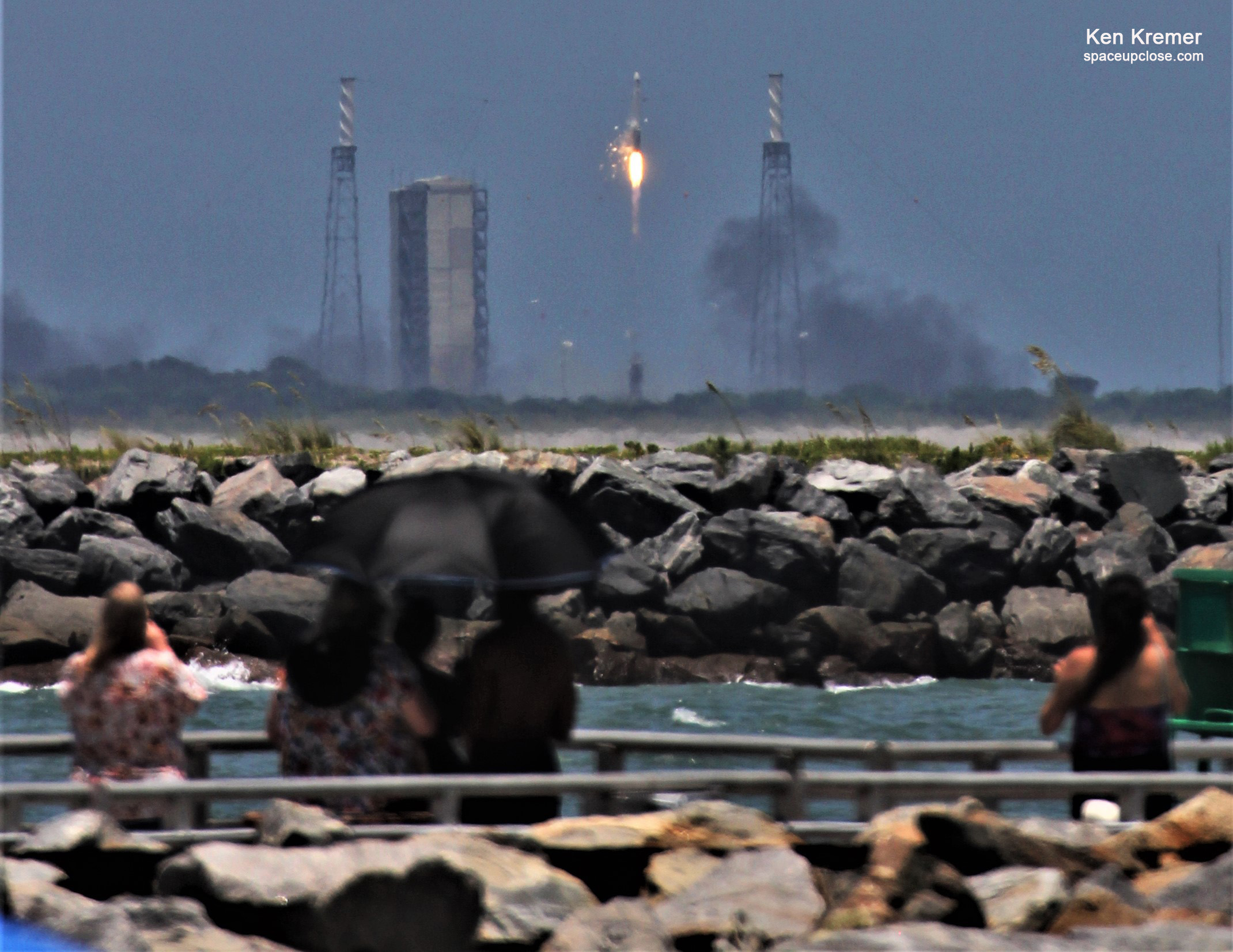
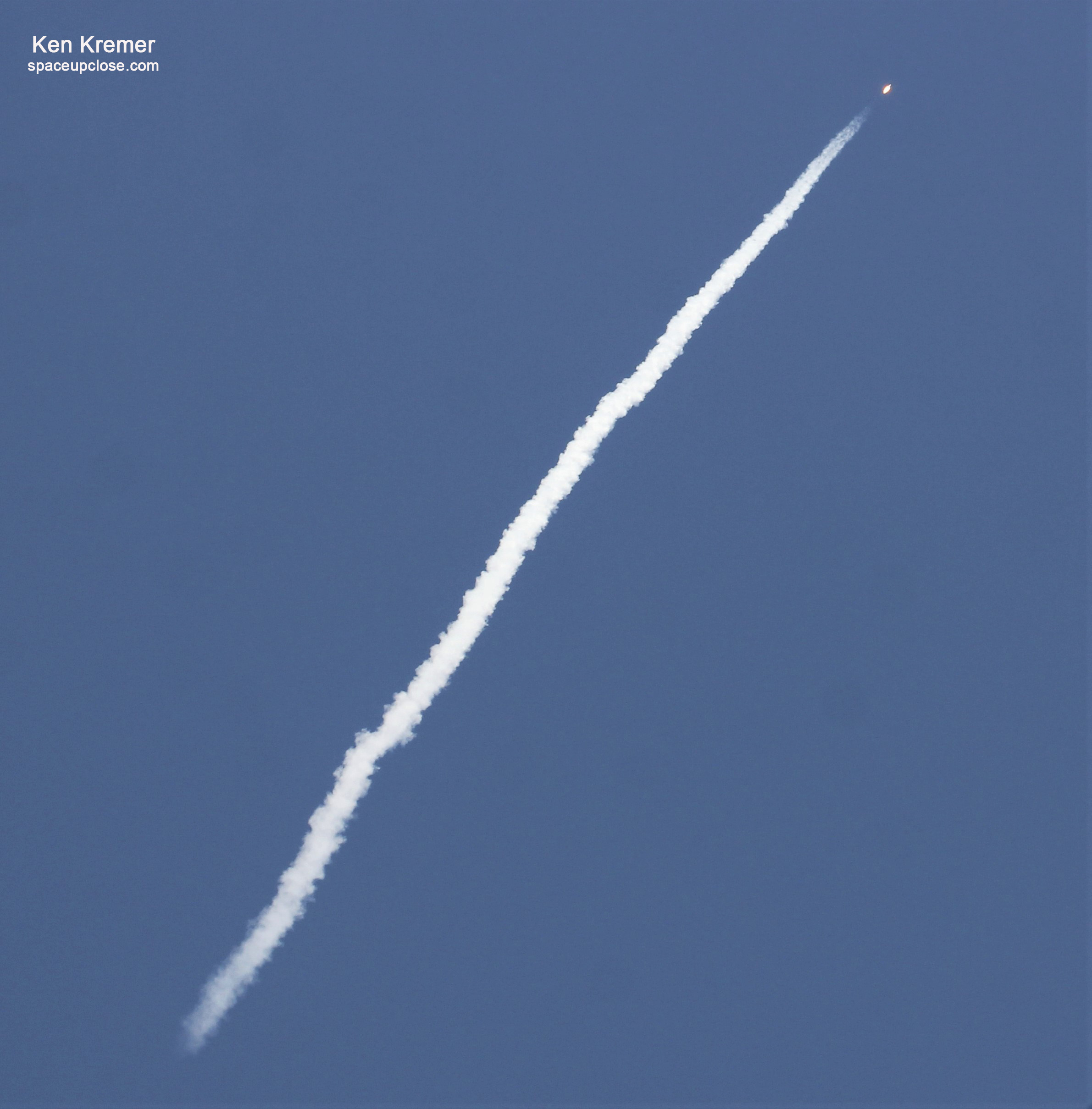
x



